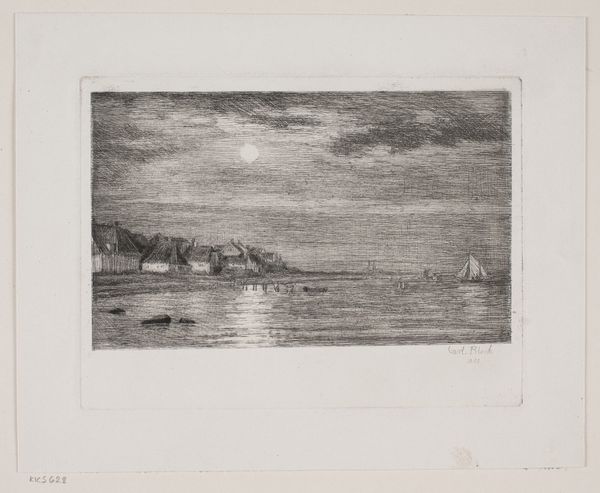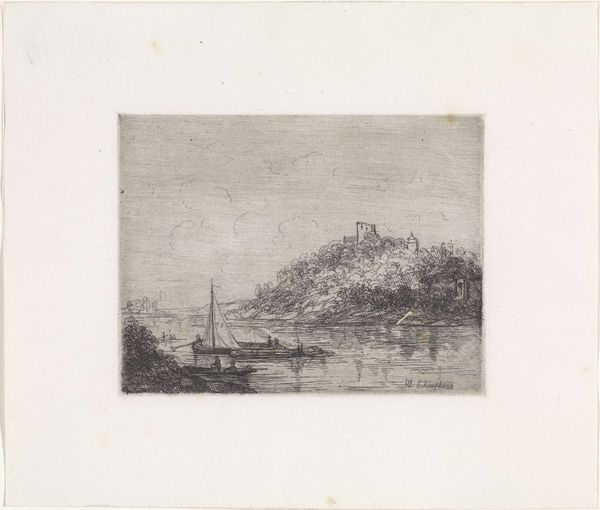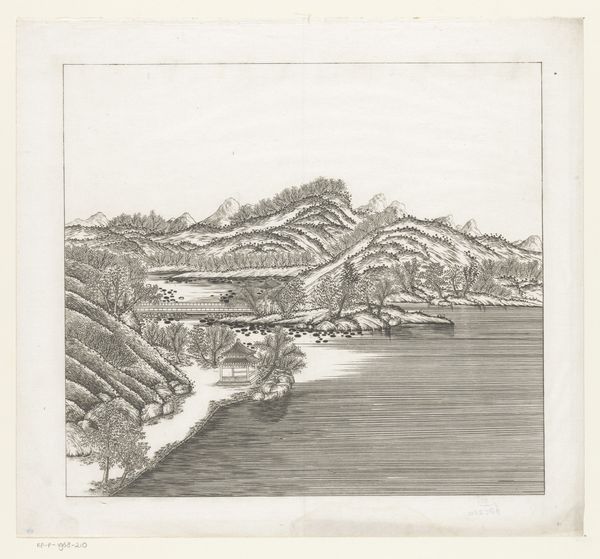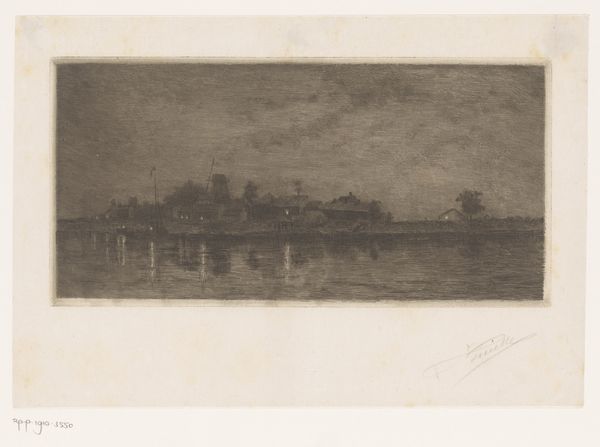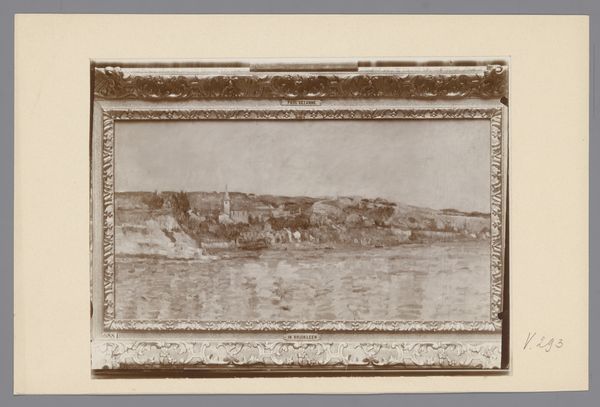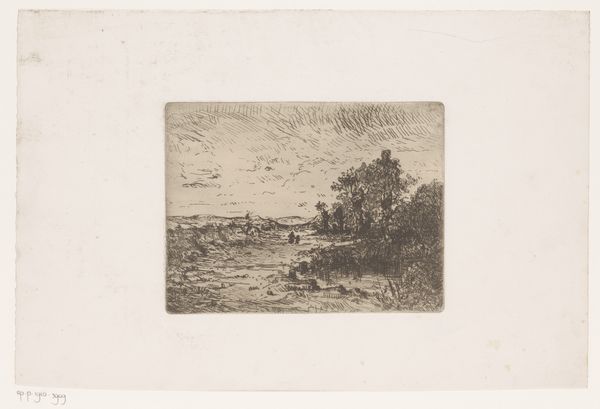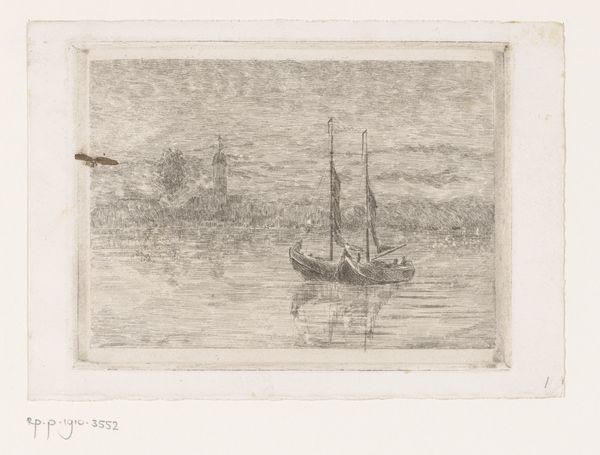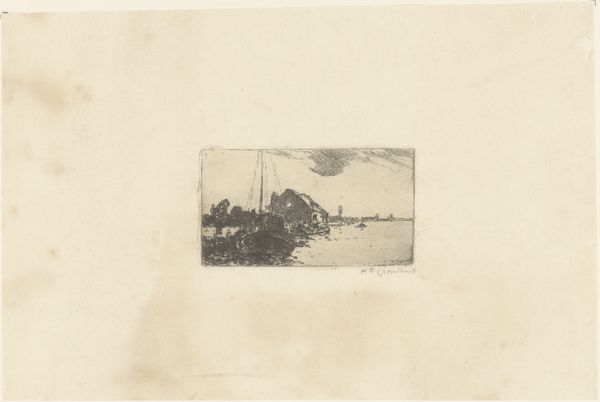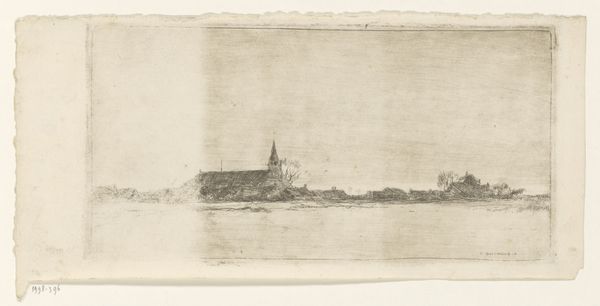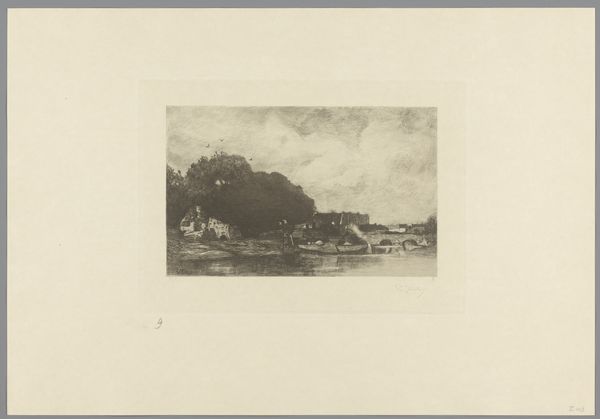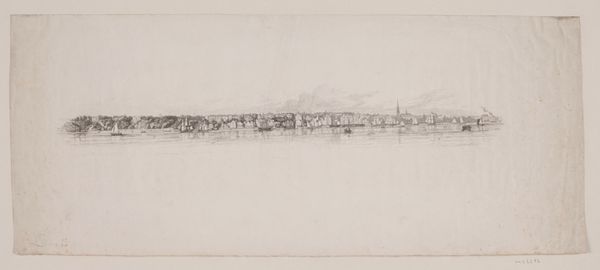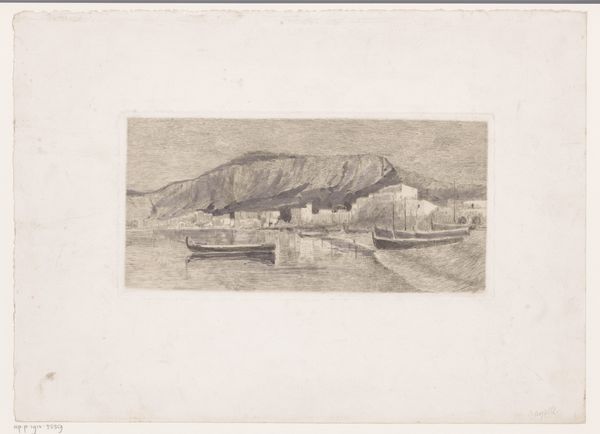
Dimensions: 110 mm (height) x 147 mm (width) (plademaal)
Editor: Here we have Carl Bloch’s 1881 etching, "Strandparti ved Hellebæk. Måneskin," or "Beach Scene by Hellebæk, Moonlight." It's a coastal landscape dominated by water and sky, but rendered in such delicate lines. What strikes you most about this print? Curator: The moonlight itself. Note how Bloch uses the etching to capture its emotional weight, a reflection almost literally on the water, like memory itself shimmering on the surface of consciousness. It’s a timeless symbol. Editor: Timeless in what sense? Is there a specific reference point you see? Curator: Think of centuries of artistic and spiritual traditions associating the moon with feminine energy, cycles of change, the subconscious. Now see it against the backdrop of a specific place – Hellebæk. Does that combination create new meanings? How much of that visual language do you think would be apparent to his contemporaries, or even to us today? Editor: Well, I immediately feel a sense of quiet and maybe a bit of melancholy… knowing it was made in 1881 gives it more context, makes me think of Romanticism and nature holding deeper meaning. Curator: Exactly. Romanticism’s embrace of emotionality certainly plays a part, but consider also how light – and the absence of it – functions. This isn’t just a beach; it’s a liminal space. Etchings, often printed in multiples, carried visual themes broadly through society. Does the reproducibility affect its symbolism? Editor: That’s something I hadn't considered. So, the act of reproducing an image changes the image's meaning? It is interesting to consider that how easily and broadly something is reproduced will change its inherent visual symbolism and interpretation across generations.
Comments
No comments
Be the first to comment and join the conversation on the ultimate creative platform.
